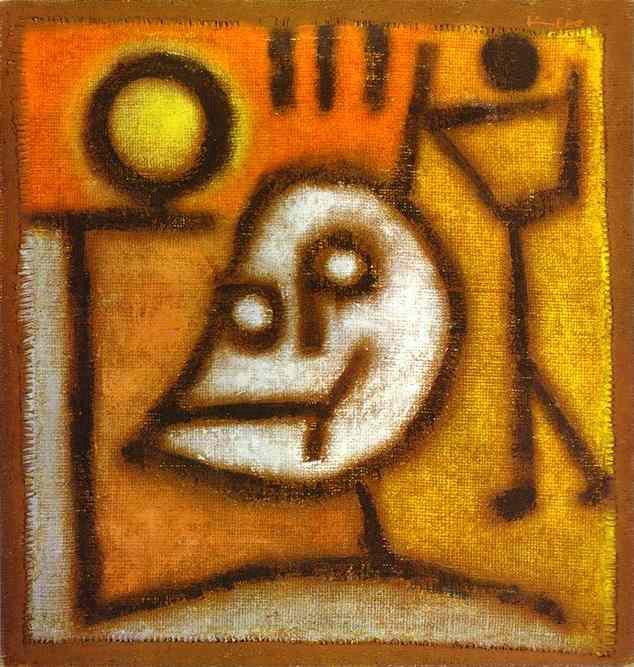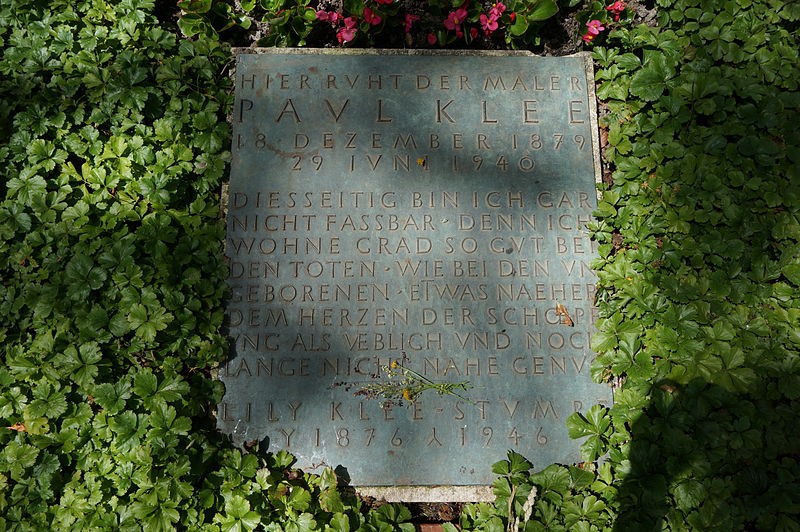How to Stay Creative to the End of Your Life
The incredible productivity of Paul Klee’s later years

Bythe time he died, in 1940 at the age of 60, Paul Klee was one of the most famous artists of his generation. He had worked at the Bauhaus and could count such luminaries as Wassily Kandinsky and Walter Gropius as his colleagues and friends.
Despite his eventual accomplishments, Klee struggled to find commercial success as an artist. During his 20s and into his 30s, he sold only a handful of works, and when he exhibited the reviews were often unfavorable. The upkeep of the family home was the achievement of Paul Klee’s wife, Lily, who gave piano lessons whilst Paul made art and looked after their son, Felix.
And even when his his reputation was established, Klee’s final years were fraught with adversity. Not only was his health deteriorating as a result of scleroderma, but the wider cultural and political climates in Switzerland (where he was born and where he lived for the last years of his life) and Germany (where he built his career) were becoming ever more unstable.
And yet, the last years of Klee’s life would prove to be some of the most productive and inspired of his career.
Early inspiration
Much of Klee’s enduring creativity was rooted in a two-week trip he took to Tunisia in 1914. He kept a dairy of his time there, and through these notes Klee’s growth as a painter can be mapped.
He painted as often as possible during his time in Tunisia, mostly watercolour sketches that could be made quickly and on-the-spot. It was during this trip that he noted his famous declaration: “Colour possesses me,” he wrote. “It will possess me always, I know it. That is the meaning of this happy hour: colour and I are one. I am a painter.”
The working-holiday would inspire Klee for many years afterwards, and as far ahead as the 1930s he continued to makes paintings that referenced his experiences in Tunisia.

Late-life adversity
Klee eventually established himself as one of the foremost artists of his generation, most especially in Germany. Yet the rise of the Nazi party forced him to leave the country and his teaching post at the Düsseldorf Academy of Fine Arts, which had been smeared as a stronghold of Jewish artists.
Not Jewish himself, Klee was nonetheless singled out for attack: “Then that great fellow Klee comes onto the scene,” wrote one Nazi newspaper. “He tells everyone he’s a thoroughbred Arab, but he’s a typical Galician Jew.”
The consequences of the derogatory Entartete Kunst (Degenerate Art) exhibition held in Munich in 1937 were just as damaging, particularly to an artist who remained acutely self-conscious and self-critical. The exhibition, in which Klee had 17 works included, was an attempt by the Nazi Party to ridicule modern artists and purge them from German culture. Slogans painted on the walls of the gallery — such as “Revelation of the Jewish racial soul” and “Nature as seen by sick minds” — were intended to stir up further revulsion among the visitors.
With the diagnosis of his illness and the deterioration of conditions in Germany, Klee began to feel hopeless and exhausted. During 1936, at the height of his unrest, his output amounted to just 25 works.
But in the following few years, these numbers would rise remarkably.
Monitoring productivity
Klee was an avid record-keeper of his own output. He carefully catalogued his paintings and drawings with a numbering system that monitored the volume and order of works as they were produced, year on year.
This catalogue was consistent with Klee’s working methods, which relied on a distinct aspect of order, a framework of regulatory practices that made innovation more forthcoming. According to his colleague Lyonel Feininger, Klee’s studio was a “carefully ordered confusion.” He preferred to work on several paintings at once, surrounded by earlier drawings that would offer guidance in a process of constant self-reflection — some from the Tunisia trip.
Klee’s innovation would survive his most difficult year because he had nurtured a process of perpetual growth. Some years before, due to a split in his teaching duties, Klee occupied two studio spaces in two separate cities. Felix recalled how his father “Traveled between Dessau and Düsseldorf, again spending alternate bi-weekly periods in each city, and since he had two magnificent work rooms in each city, he delighted in the half-finished ‘children’ that awaited him each time in whichever studio he was away from.”

Inspiration accelerating
In the last years of his life, Klee adapted to his illness by making works that were simpler and larger in design. He deepened his affinity with hieroglyphic-style motifs, producing paintings that left behind formal and spatial depth in favour of a more direct, ideographic gesture.
His paintings from this period remain some of the most vital and beguiling creations in modern art. I wonder, from where did he get his sense of ferment and hold on to it so urgently? How did he stay inspired?
In 1937, Klee created 264 works; in 1938 the number nearly doubled to 489; in the last full year of his life, 1939, he made more individual pieces than in any year previously, at 1,254.
He expressed his excitement to his son, Felix, at the time: “Productivity is accelerating in range and at a highly accelerated tempo. […] Twelve hundred items in 1939 is something of a record performance.”
Klee was always building on past achievements, often re-using sketches and half-finished compositions as the basis for new paintings. Inspiration of this kind is intimately related to growth. A person travels, sees, listens, learns, reads and endures. In Klee’s case, there was also an internal growth happening within the body of work. The process — a type of harvest — gathers material, but it also leaves material behind. To refine is to learn and in doing so, evolve one’s sensibility.
Paul Klee’s innovation stayed vibrant to the end. His creativity was unceasing because he never let the sense having arrived overtake him. Search and growth were essential aspects of his practice, one complimenting the other, neither of them fully complete — always half-finished.
The words on Klee’s tombstone ring the same truth, “I cannot be grasped in the here and now, For my dwelling place is as much among the dead, As the yet unborn, Slightly closer to the heart of creation than usual, But still not close enough.”

